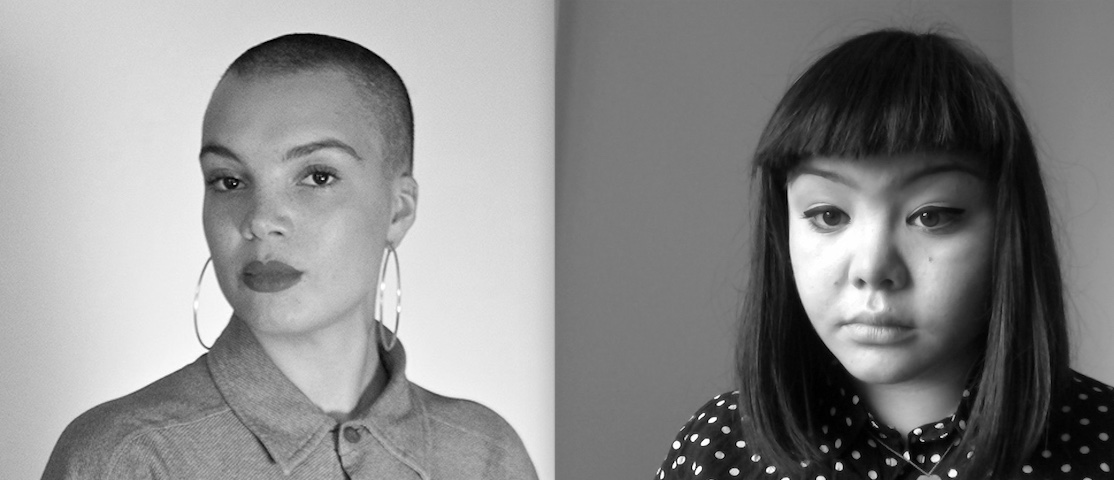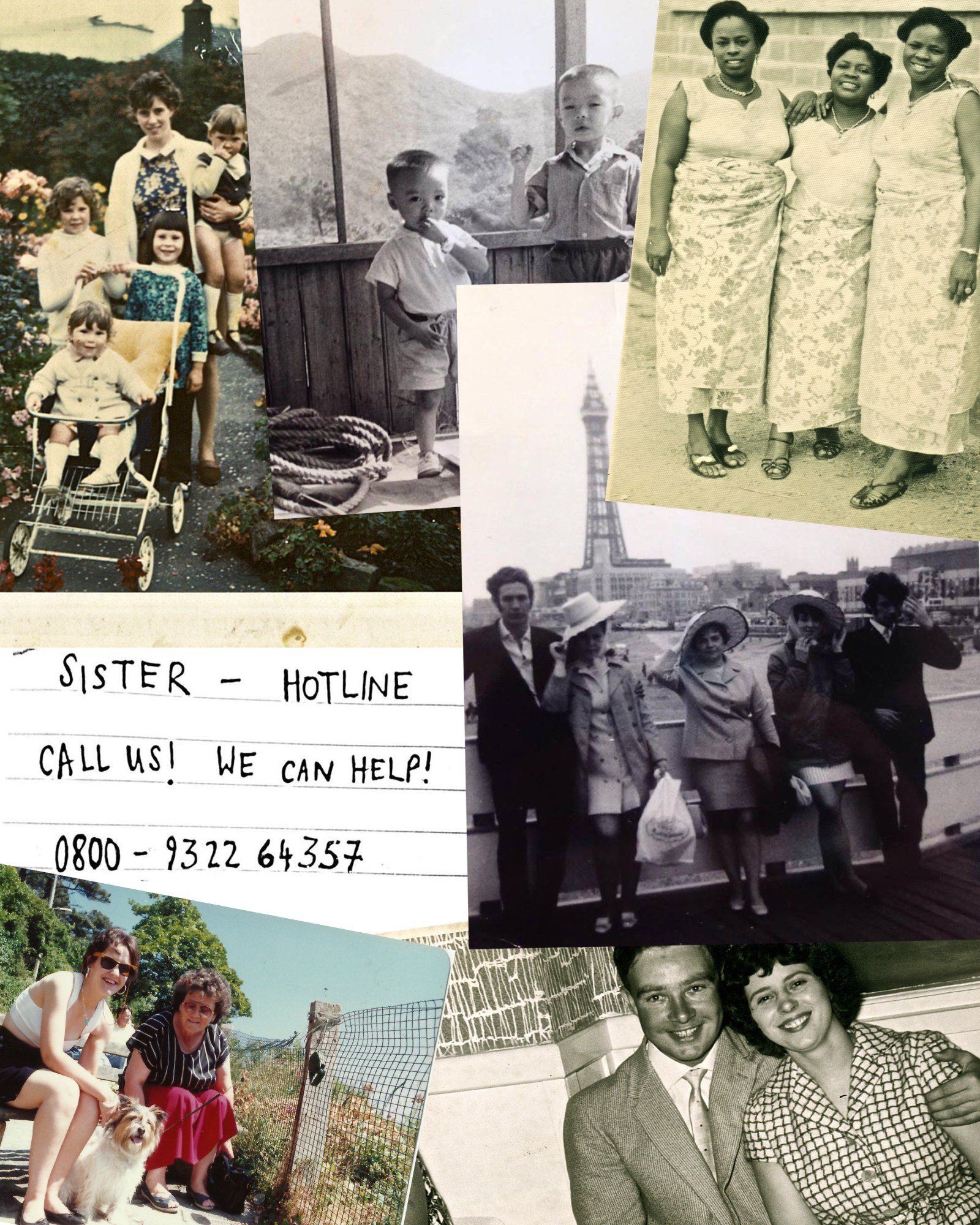Glasgow is a city with an art scene often invoked in broad, laudatory terms. The first in Britain to pioneer a shift from heavy industry to the creative industries. An apparent creative arcadia, renowned for its self-sufficiency, variety and inclusivity. One propped up by cheap domestic and studio rents, a tempting world away from the stifling costs of London.
But as with all broad brushstrokes, it’s a retelling that misses much of the nuance. Though it may well be an attractive proposition, with much to recommend, it’s still a world riven with the same issues faced in other cities and scenes. Interlocking questions of access, class, gender, race and representation. Of burgeoning gentrification and contested spaces — discussions that animate and inform the practice of friends and collaborators Siobhain Ma and Cass Ezeji.

Sister Collective was formed in 2016 as a means of channelling some of the frustrations felt by Siobhain and Cass at the everyday ignorance faced as two mixed race women working within the Glaswegian art world. While neither Siobhain, with her background in experimental sound work, or Cass, a singer in the bands Golden Teacher and LAPS (Ladies as Pimps), went through traditional art school channels, the origins of their friendship traces back to their teenage years and a lottery funded arts project, The Studio. It was from these beginnings that Sister Collective was born with the intention of turning ongoing, complex conversations into something tangible.
Working within a fluid mixture of performance, soundscape and text, it was their 2016 debut piece Hotline (initially performed at the CCA: Centre for Contemporary Arts) that began to unpick the threads of assumption and prejudice the pair felt lay behind responses to their mixed Scottish identity. Its form was sparked by Cass’s reading of the African Renaissance poet Wole Soyinka’s Telephone Conversation, which charts an attempt to rent a room from a woman who, in turn, attempts to work out the prospective lodger’s skin tone through the sound of his voice. This developed into the resulting work, with its exploration of the codes and inferences of speech, welded together through testimonies and experiences of other mixed BAME Scots. It spoke to the numerous instances of, as Cass puts it, how “people are often surprised by my Glaswegian accent or the way I’m often assumed to be white when I’m talking on the phone with strangers. It’s an interesting thing, the assumption that Scottishness always equates to whiteness.”
Since Hotline, there have been numerous projects and collaborations, while 2018 will witness the coming of a long planned but as of yet unfinished zine. A mixture of poetry, photography, recipes and anecdotes, the duo plan to run it in conjunction with another exhibition focussing on mixed race families, particularly those that have experienced fragmentation and loss. Other new concepts include organising a food and performance event in the hope of encouraging other BAME people, especially young women, to get involved in arts projects.
Yet, these self-started initiatives stand somewhat apart from the oft-reported main current of contemporary arts in the city. Here, as elsewhere, the central issue of access remains unanswered. “A lot of the time art spaces don’t feel welcoming for working class/BAME/LGBTQ+ people, especially young people in those groups,” Siobhain suggests. She mentions Project X, which champions dance from the African diaspora in Scotland as a corrective, having attended one of their symposiums in 2017. “There was a discussion there about people of colour going out and supporting work by other people of colour. We have to make an effort, we have to show up in order for these things to change and for people to see there is an appetite for it.”
If meaningful improvements in representation are the end goal, it also requires support from funders and arts bodies such as Creative Scotland and other well-backed institutions. However, Siobhain and Cass are keen to stress that any prioritising should steer clear of tokenism. “If the sentiment is genuine we can tell,” Cass says, “but there have been instances where we’ve been asked to perform at certain events and we’ve had to question our involvement because it’s been clear they just needed a few non-white people to fill the space.”
Examples do exist of galleries and other collectives in the city trying to widen the scope of their programming. Away from the network of established galleries, its artist-run spaces such as Transmission and DIY projects from groups like Where People Sleep — who organise shows and events in their flat — that might be the most immediate means of chipping away at the idea of what an “art scene” actually looks like. Siobhain recalls having the opportunity to be part of a recent group show organised by the collective and how “they were so welcoming to us, especially since we’re not from an art school background”. It’s this sense of community and building of connections that is so vital. As Cassie puts it, “It’s like a peer support type thing. I think the work that the women of Where People Sleep has done a lot to redefine the Glasgow art scene. It’s very inclusive, it’s multi-ethnic and it’s born from a grassroots sensibility.”
Though much work remains to be done, the first stones are being laid for a more diverse, inclusive future for the Glasgow art world. For Sister Collective, it’s a cautious optimism rooted in the twin currents of collaboration and education. As Cass says, “The more we come together with other diverse projects the more we can create a strong foundation for all of us. That’s how we can create a more representative art scene. Programming that isn’t done by white middle-class people and which includes involvement with people like us. Not just ticking boxes and reaching diversity targets. I’d like to see people like us at the top doing the programming in the first place.”
Francisco is Deputy Ed of Mr Hyde. You can find out more about Sister Collective here .
